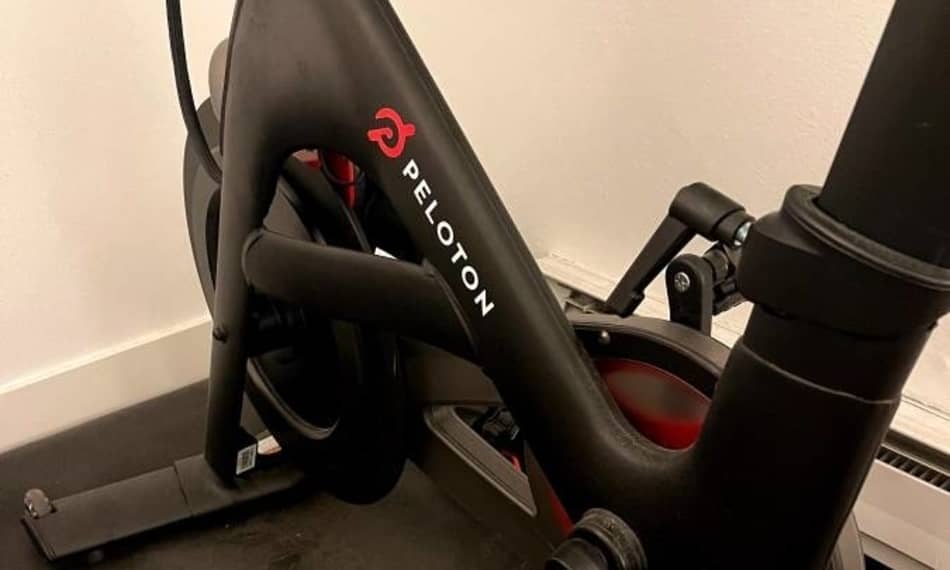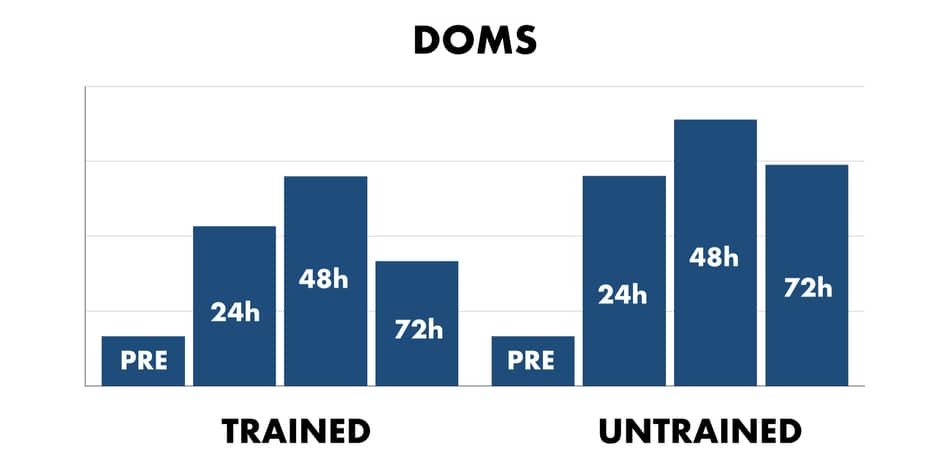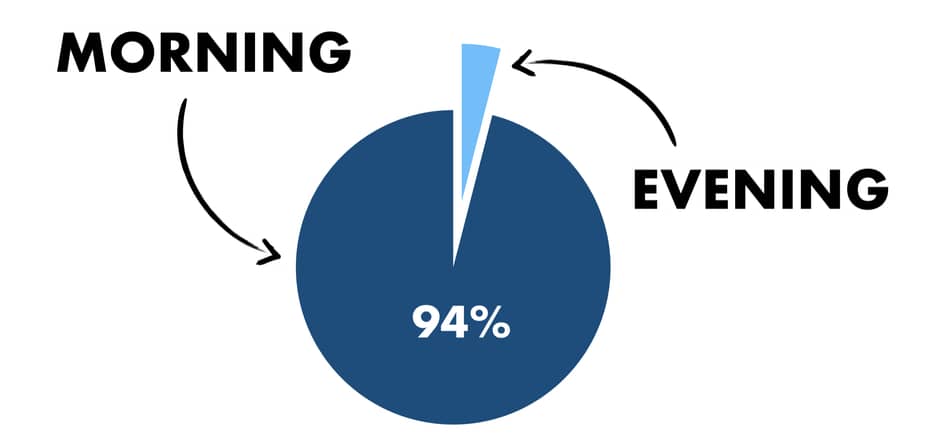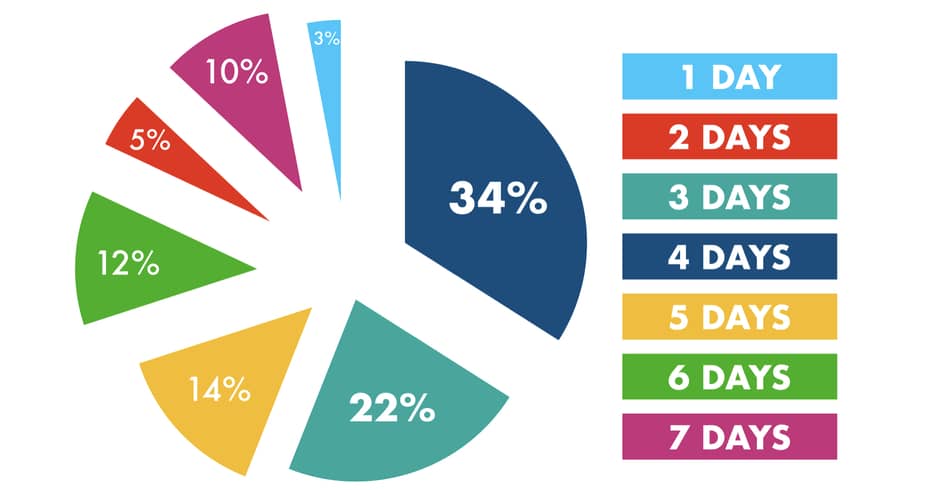Peloton is a great solution to get your workouts done without leaving your home. But how often should you use it?

In general, you should use peloton 3-4 times a week if you’re a beginner. A the beginning the body takes more time to recover from exercise. People who are already used to intensity can increase the workout volume up to 5-7 days a week.
But this all depends on the type of classes you do, the duration of the class, and your working schedule. In this article, I will explain how to design your own peloton bike workout plan and how to fit into your lifestyle.
How often should I use the peloton?
It depends.
Generally, you should use a peloton around 3-4 days a week to start. As you get more comfortable with intensity and your muscle soreness fades away quicker you can increase the volume by adding more training sessions or days.
In the beginning, the most important factor in recovery. We need to understand that a person who is already physically active has a different recovery rate, compared to an untrained person.
What is the recovery rate in exercise?
I used to think that being trained meant you can train harder (duh). In reality, it’s more about how fast you can recover.
- Recovery rate is the efficacy of how fast your body can eliminate all the byproducts after an exercise session.
- When you exercise, especially during the eccentric phase, the muscles produce several pro-inflammatory compounds (myoglobin, creatine kinase, lactate, cytokines) that cause damage to muscle fibers.
The release of those compounds causes post-exercise muscle soreness called DOMS (delayed onset muscle soreness). This is the muscle pain that you feel even several days after the session.
Research
To help you understand this concept better, please have a look at the study done by Dr. Ypatios Spanidis from the University of Thessaly in Greece.
He documented 40 volunteers and divided them into two groups.
- Group 1 (Trained people who did aerobic and resistance training sessions at least 3-4 times a week on the regular basis).
- Group 2 (Untrained people who didn’t exercise).
The goal of this research was to examine the levels of inflammatory markers in the blood after exercise in both groups and see what was the difference.
They also looked at the levels of muscle soreness 24 hours, 48 hours, and 72 hours after exercise.
The results

Here are my observations.
- There is not a huge difference between trained and untrained people in the first 24 hours following the training.
- However, the biggest difference happened after 48 and 72 hours.
- After 72 hours, the muscle soreness almost came down to baseline for trained people.
- For untrained people, muscle soreness stayed high, even after 72 hours.
In fact, the difference between trained and untrained was quite significant.
People who were trained and whose body was already adapted to exercise-induced oxidative stress, not only had lower DOMS immediately after the workout but also were able to recover faster (Spanidis, et al. 2018).
Here in the table below you can see that trained individuals have a much better recovery rate, especially in the period between 24 – 72 hours.
| Pre | 24 hours | 48hours | 72 hours | |
|---|---|---|---|---|
| Trained | 1.00 | 3.52 | 4.52 | 3.00 |
| Untrained | 1.00 | 4.21 | 5.34 | 4.43 |
- Untrained people have a much lower capacity for clearance and recovery, therefore they feel muscle pain and tension for longer.
- On the other hand, trained people, who already spend a few weeks on the peloton bike have a higher capacity for the clearance of those pro-inflammatory compounds.
In other words, they can train more and they don’t get so sore anymore. The body adapted to the exercise intensity and is more efficient in the clearance of those compounds.
Recovery is also an important factor in injury prevention. People who train while being sore and have muscle tension are more likely to get injured (Cheung, et al. 2003).
Should you use a peloton when sore?
No.
You shouldn’t use a peloton when sore because muscle soreness impacts your performance. It also puts extra stress on muscle ligaments and tendons.
During the workout, you may not feel the pain because of endorphins, but once the workout is done you may get injured.
How many days a week should I do peloton?
It depends. How many days a week should you do a peloton does depend on your fitness level.
- People who are just getting started should do it 3-4 days a week.
- People who are already familiar with the routine and feel comfortable with the intensity can do 5-7 days a week.
Here is the video from Dr. Thomas Parr, an orthopedic surgeon, and sports medicine physician, who explains how many days a week you should train, and why.
I asked people how often they use peloton
I’ve surveyed 3 different social media platforms where I’ve asked over 500 peloton users how often they use peloton bikes and what time of the day is the most suitable for them.
I also asked my clients how they fit peloton into their schedules. Here are the results.
The results
As you can see, almost all of the people asked were using their peloton first thing in the morning.
The typical reason for that was that it gives them more energy or that’s the only time they have available. People said their days are always busy so getting up even 15 minutes earlier makes a difference.

| Morning rides | Evening rides |
|---|---|
| 96% | 4% |
| 528 people prefer to do a morning workout | 22 people prefer doing an evening workout |
Another question I’ve asked was about the frequency and how many days a week are you currently using your Peloton bike. Here the numbers were much more spread across the board.
Here are the results.

| How often you do peloton | Number of people |
|---|---|
| once a week | 16 |
| twice a week | 27 |
| three days a week | 121 |
| four days a week | 187 |
| five days a week | 77 |
| six days a week | 66 |
| seven days a week | 54 |
As you can see, the numbers vary.
- As we look at the graph above we can clearly see that only 10% of people use a peloton bike every day.
- I hope it helps you to realize that you don’t need to be 100% time on the bike. In the beginning, it’s not about the frequency, but sustainability.
In fact, most of the people (308 participants) do it between 3-4 days a week.
Of course, those numbers don’t have to be used as a reference. It just helps to put things into the perspective and realize that it’s not either you do it every day or you don’t do it at all.
Also, please remember an extensive list of peloton low-impact rides that can be done on your off days.
Those rides not only help with recovery much better than passive rest but also reduce muscle soreness and are beginner-friendly.
Can I do a peloton every day?
I did.
There are no problems in doing peloton every day, as long as you choose the low-intensity and short-duration class.
- Classes with high intensity and high duration often lead to muscle pain.
- Classes with short duration and medium-low intensity do not lead to muscle soreness and allow for consistency.
In other words, if you want to do peloton class every day, it is better to reduce the intensity down and choose short 15-20 minutes classes (this way you won’t overtrain and you can stay more consistent).
Don’t do high-intensity rides every day
On the other hand, if you go with the highest intensity and longest duration for 7 days a week, it won’t take long until your body will give up.
When the workout intensity exceeds the ability to recover from it, it leads to overtraining and injury.
Do you remember this survey I showed you? I’ve actually taken the time to ask all of the people who said they do peloton 7 days a week and ask them for some tips for beginners or anybody who wants to use bike more often.
Tips on how to use peloton 7 days a week
I asked in the peloton community for tips on how to use a peloton bike every day, without getting sore. Here are the best 5 tips for people who want to use a peloton bike every day.
Wake up early
- Try to wake up at 4:00 am for workouts.
- The first few days are hard of getting up early but your body will eventually get used to it.
- If 4:00 am is too early for you, then start by getting up 15 min early than you do now.
- Do a 15 min class. Over time just keep adding time.
Try shorter rides
- Try shorter rides because something is better than nothing.
- Set a small goal to just do a 5-minute class.
- Then once you’re in the middle of the workout, you’ll feel better and often choose to do another 5-minutes.
- On some days when all you have is 5 minutes to give, that’s ok. Start with frequency (even if it’s short).
Do more in the evening
- Even with a long day, you have 15 or 20 min to do a quick ride.
- It’s exhausting but worth it every time.
- 10 minutes is better than no minutes. Do you think you could start with squeezing 10 minutes in?
- You can always check on the news or watch your favorite tv show while you’re on the bike.
Change your mindset
- Remember that you GET to do it, not have to do it.
- Change your mindset from ‘I don’t have time” to ‘I’ll make a time”.
- There are 24 hours in a day and there are 5-45 minute rides.
- Set your alarm for 6:00 am with some motivational song like Queen’s “Bicycle Race”.
Do more on weekends
- You might have to be a weekend warrior.
- If your week is just too hard to do a full class, take advantage of your weekend time.
- If that’s the only option, do your hardest and longest workouts on the weekend.
- Do short workouts on busy days, and save longer stacks for weekends.
Just like peloton Matt Wilpers always says to start with frequency, then add duration, and then intensity.
Is it bad to ride the peloton every day?
It is not bad to ride a Peloton bike every day because you can adjust the intensity and duration.
- On the days when you have more time and energy, you can no longer have 45-60 minute sessions.
- On the days when you don’t have time or energy 15 minutes is enough.
In other words, you don’t need to max out every day. There will be days when you want to reduce your intensity. And that’s ok.
I have several clients who have zero time during the week and all they can fit in is just 15 minutes of class first thing in the morning.
How often should I rest from the peloton?
In general, you should rest 2-3 days from the peloton, especially in the beginning. People who just get started need more time to rest and reduce muscle soreness.
During the rest time, you can implement active recovery exercises like walking or stretching.
You need a rest
Yes, you do need rest days from the peloton because it will help you to recover and prevent injury. However, rest days can still be used to do some low-level activities like playing outside, hiking, yoga, or outdoor cycling.
Plus, it will prevent overtraining. I knew I overtrain on a peloton when my body felt weak, my muscles felt tight and I had low energy.
So it’s kind of obvious.
Also, you know when you’re overtrained when you feel like you lost the motivation and the workouts leave you worse than before.
Getting the right start and pacing yourself from the beginning will help you to prevent overtraining. Over time, the body will build up enough lactate clearance capacity so you recover faster from the classes and slowly you can implement progressive overload.
Relax with progressive overload
Progressive overload in the peloton refers to increasing the volume of your training classes to improve the exercise adaptations, improve physical performance and body composition.
It means doing more sessions, more intensity, or more duration.
- Progressive overload is important if your goal is to get fitter and improve your overall performance.
- When you progressively increase the intensity, volume, or duration of your rides, you will get stronger, faster, and leaner.
Of course, when you feel weak, that is the last thing on your mind.
The problem is when people jump too fast, too soon because they want to be fit tomorrow. You know it doesn’t work like that. Getting a slow start is critical because it gives the body enough time to create physiological adaptations.
Conclusion
- There are several ways to skin the cat. This means you don’t need to go all out.
- You can definitely pace yourself and design your peloton rides around your schedule that fits your needs and matches your fitness level.
- For people who just getting started, a single 15-20 minutes peloton session is a great start.
